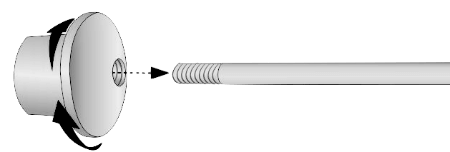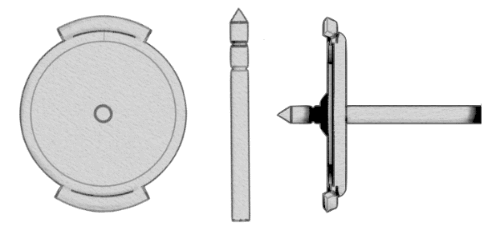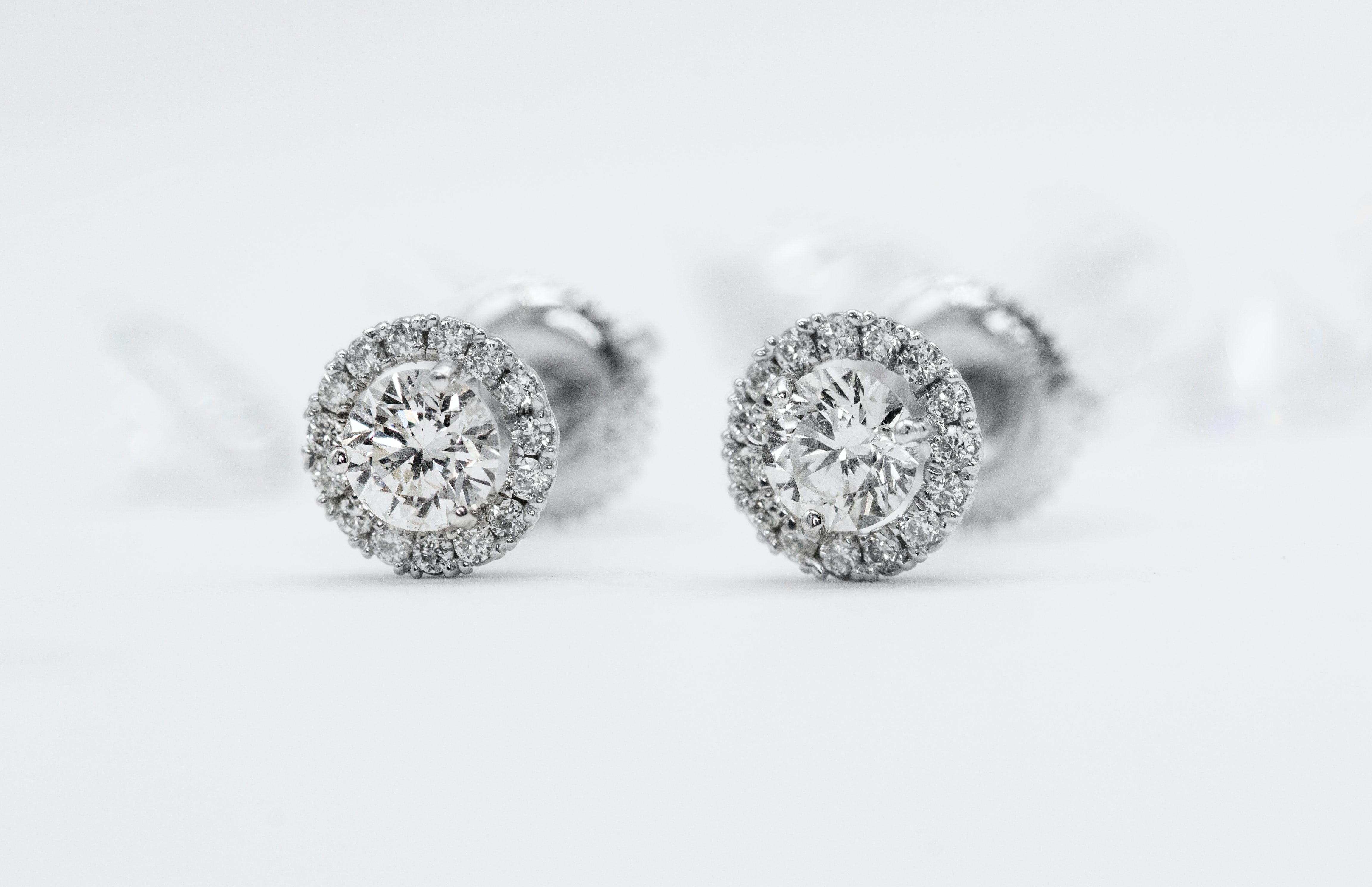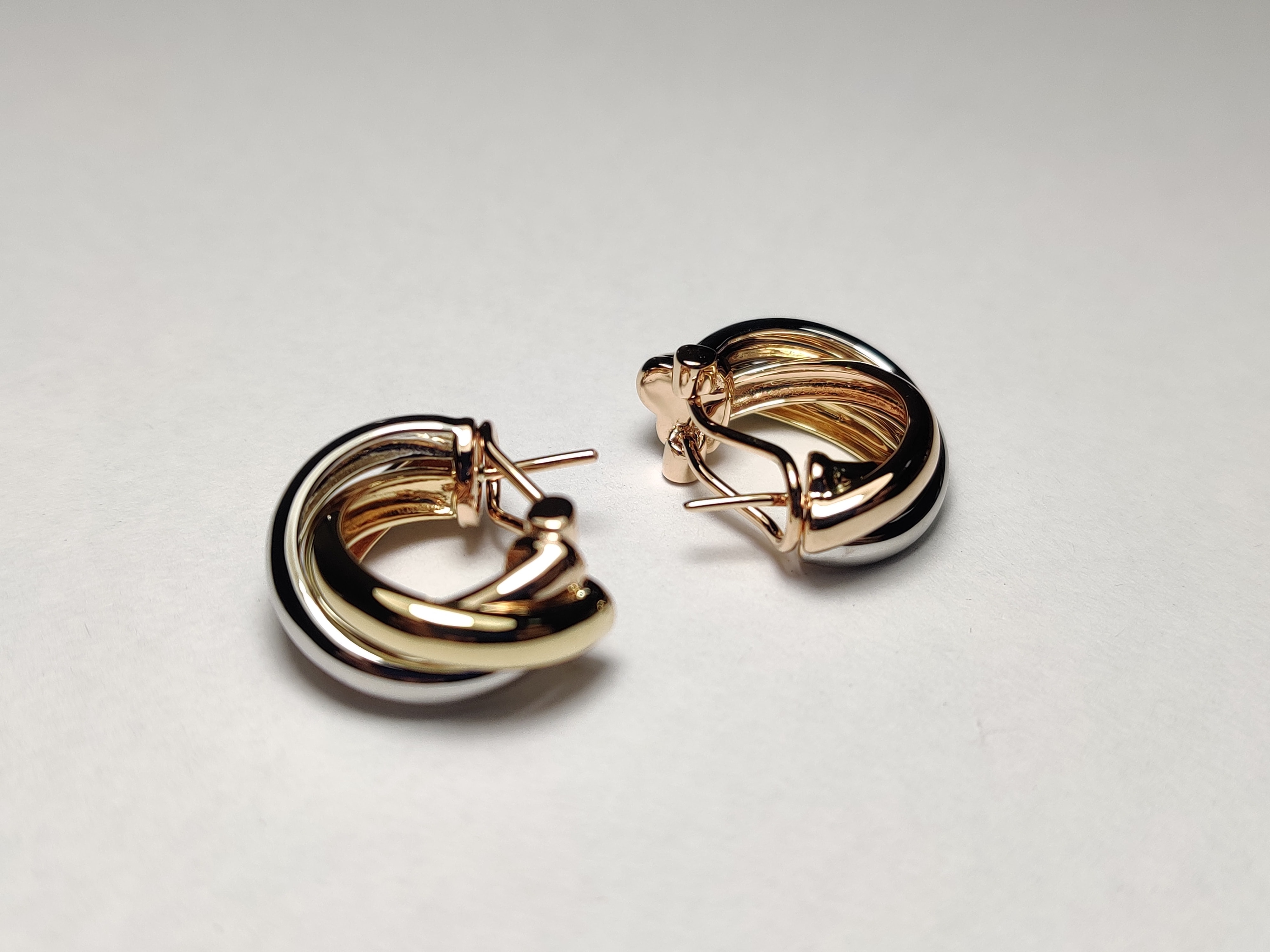Earring Backing Guide
When it comes to securing your earrings in place there are a few options you need to consider: push backs, screw backs, flat-back, butterfly back, earring safety backs, lever back and alpha backs.
From gold and silver to stainless steel, earring backs now exist in every type of material. There are see-through ones made of thin plastic, those made from pure metal or alloys, and even some which allow you to wear earrings without even having your ears pierced! But what are the most common earring back types you will find on the market?
Here at Abelini, we have put together a guide to the most popular earring backings, so you can be certain about how your new jewellery works before making a purchase. Let us look at each in turn so that you can decide on your perfect match.

Push Backs

These are the most common type of earring back, and they consist of a flat plate that contains a hole through which a post passes. The back is held in place by a gentle tension that is applied by styled scrolls of metal. The main reasons for their enduring popularity are how easy they are to fit and remove, and the sheer variety of sizes that they come in. They are the perfect choice for a set of stud earrings, and any type of light earrings and drop styles.
Screw Backs

Screw backs are popular as they are the most secure earring back available. The threaded post passes through the ear before a small nut is screwed on from the other side. This prevents them from popping off when getting changed; as can happen with push backs. The downside of this approach is that they take a little longer to fit and remove. They will typically be used for high value pieces such as diamond earrings or studs that contain expensive precious stones.
Alpha Backs

The alpha back is the most intricate of the 3 designs. It comprises a spring-loaded mechanism that is activated when you apply pressure to it. Pinching the back in the correct place will cause the locking mechanism to retract so that the post can be removed. They’re designed to provide a comfortable and secure fit that can be quickly and easily adjusted. In this sense they combine the best parts of push backs (easy to use), and screw backs (secure fit) into one all-inclusive design.
Flat-Back Earrings

This describes any backing which has a flat edge. They protect your ear by pushing against the back of your lobe to keep it flattened whilst you have the earrings in. This supports the weight of larger earrings, which have the potential to stretch or damage your earlobes, particularly if they get caught on something, like your hair or an item of clothing.
Flat back backings tend to be found on small studs, but can also be found on hanging or statement earrings too. Other styles of flat-back earrings include jumbo earring backs, which ensure the whole lobe is protected, as well as push backs and screw posts. Screw posts are similar to push backs but offer a higher level of security thanks to their screw application.
Butterfly Back Earrings
Have you ever seen earring backs with two small metal circles on them? These are called butterfly back earrings, and they work using friction. The two disks function by clasping the pointed back of the earring between them, which keeps them held firmly in place when worn in the ear. Due to this, they can withstand a lot of movement without the risk of them falling out.
All you need to do when putting one of these on is to slide your earring into the small hole in the centre of the back. It is as simple as it sounds, making them extremely easy to use.
Another positive of these backs is their cheapness in the marketplace. They can be found for low prices at any accessory store or online shop. In fact, our range of stud earrings utilise this type of back
Earring Safety Back

Also known as starter earrings, earring safety backs are usually characterised by a rounded back and a locking clutch design. However, they also exist as tiny pieces of plastic that can be slid onto hook earrings to keep them in place and stop them from falling out.
Due to their design, these types of earrings are most common among children and babies. Older children can wear their earrings to school with less risk of being hurt or losing them. They will also find it easy to use them when putting them in their ears themselves
Lever Back Earrings

These backs are very similar to latch backs, which are mostly used on heavy earrings such as hoops and dangling designs. In fact, these can be found in our own range of prong hoop earrings.
Not all clasps of this type look the same. They tend to vary according to the style of the earring, but the most common are either U or loop shaped.
This earring back forms a lever and clasp mechanism which allows for easy application. Simply push down the lever and hook the open end into your ear. Then, allow the level to snap shut through its spring mechanism. These are a great choice if you want assurance that your earrings won't fall out or damage your earlobe.
FAQs
How To Get An Earring Back Off That Is Stuck?
The first step is not to panic - getting an earring back stuck is common. Using a small amount of petroleum jelly or Vaseline will help you immensely with this. We recommend that you apply a small amount of Vaseline to the hole on the back of your lobe, where the earring and back meet, then gently twist and turn the back. Once the lubricating gel has been dispersed around the earring, you should then find the back is easier to remove. Hopefully, it should just slide off if it's a butterfly back, or begin functioning again if it's a lever back, but this might take a few attempts.
How Do You Clean Earring Backs?
Earring backs should be cleaned regularly to remove the build-up of sweat and dead skin that can accumulate on their surface. This can cause an infection if you neglect this part of your sanitary routine, particularly if your piercing is relatively new.
Before putting in your earrings, make sure to clean your lobes with a saline solution or antibacterial soap, then use a suitable jewellery cleaning product to clean your backs. These can come in the form of wipes or even pens, but each metal requires a different level of care. Make sure to check with your manufacturer to see what they recommend for your earrings specifically.
How Do You Remove Flat-Back Earrings?
Flat-back earrings can easily be removed by pulling or unscrewing them, depending on the design. If you are unsure, make sure to consult your manufacturer on how to do this before applying them to your ears.
How Do You Remove Butterfly Back Earrings?
Butterfly back earrings can be removed by holding the disk at the back with one hand and the earring at the front with the other, before gently pulling the two apart.
How Do You Remove Earrings With Safety Backs?
Safety backs come in a range of designs, so depending on the type you have, you will either remove them by pulling the back away from the earring or unscrewing it.
How Can You Keep Earring Backs From Falling Off?
Using earring backs which are good quality is the best way to ensure they will not fall off. They must also be applied properly, according to the manufacturer’s instructions, or else they will not be guaranteed to hold your earrings in place.